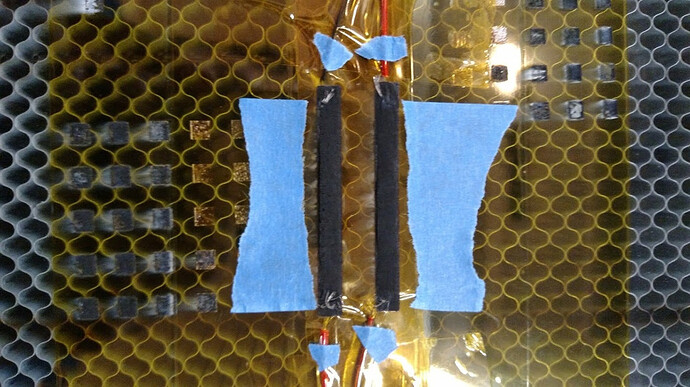um wow!
Okay, help out someone who is interested but somewhat ignorant on this. How do you know you made graphene? Just the impedance, or is there some other test?
Right now, just the impedance. If I can get some funding at work, I might have some other tests I can run. I’m following the process from this paper:
They used a universal CO2 laser, 4.8W. But they didn’t say what there other setting were. Most of the paper was about doping the graphene to make a supercapacitor and its electrical properties afterward.
Oh wow, micro supercapacitors! Get this figured out and we’ll all be making them for our electronics.
Thinking @volivaa should be tagged here. I believe he has even possibly mentioned it on the forums.
Out of my realm of knowledge but appears to be very cool!!!
Yes, I am very excited by this technology. I posted this earlier. I hope to do some experiments as well when I get caught up with contractual obligations.
I need to read the paper you referenced Joe, but I have a spray on transparent, fluorinated tin oxide electrode technology that might be useful.
Ever since this over the top video came out, I’ve been fascinated by graphene. Keep it up and keep us posted.
And I just bought my GF to etch and cut dead plants…
Oh, better article. It focus’s on making the LIG instead of turning it into a capacitor. Looks like I’m hitting the right resistance values.
Edit: From the article and the video’s I’ve seen, I think the sheet I’m using is too thin. They use a 5mil thick sheet, I am using a 1mil thick tape with 1mil of adhesive on it. I’ll need to get some thicker stuff.
I’ve never seen that video. That’s awesome, they made it was a DVD drive! Much better than the scotch tape approach.
Read up on the use of melamine and dicyandiamide for introducing nitrogen heterocyclic rings into a graphene structure.
Find ways to introduce thiophene, selenophene, siloles, and phospholes into the mix for a greater range of properties. Avoid the toxic arsoles. I just realized that last sentence was good life advice as well. Lol

Wow!
Please move the thread to Beyond The Manual - thanks.
Wow. Not by any means useful yet, but wow.
Assumptions:
- Glowforge cannot cut metal.
- Graphene is electrically conductive.
- When the LIG is formed, it has topography.
Experiment:
Use LIG to connect wires.
I sandwiched some wires between some Kapton tape. I exposed the wire through the Kapton. Then I made some Graphene traces.
I GIVE YOU LIGHT!
Hopefully with this, some Kapton sheets, and some components, people can make prototype boards without the boards!
All my likes. Well any I have left after the dovetail and countersink.
What resistance do you get? You could simply be making graphite by burning plastic with carbon in it. How do you know it is graphene?
E.g. epoxy PCB material becomes conductive when it gets too hot and can create self sustaining fires while the power is applied despite being UL rated V0, i.e. self extinguishing.
Even if it’s not graphene, the fact that it’s conductive is great news. I take it that the laptop tape isn’t conductive before treatment… Just checking lol.
Is there anything the Glowforge’s laser can shoot through without cutting? I was thinking you could sandwich the laptop between two layers of ‘laser permeable’ material, laser your circuit design and this might give you a more robust end result.



